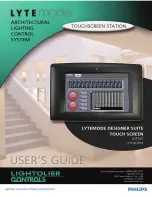
Defining The T1/PRI Terms
Bipolar
A bipolar signal is composed of alternating pulses that both represent a digital logic 1. The positive pulse is a (+)
and the negative pulse is a (-). Zero volts represents a space, or digital logic 0.
Bipolar Violation (or error)
A bipolar error is a digital logic 1 (or mark) that has the same polarity as its predecessor.
NOTE: Every time the system regenerates the signal stream, it corrects any bipolar errors; therefore, it prevents
end-to-end error checking from using bipolar errors.
B8ZS (Binary Eight Zero Substitution)
This is a technique to send an all-zero channel without violating the ones-density requirement (a single one in
each channel and no more than 15 zeros in a row). Voice transmission will not allow an all zero channel. The
system accomplishes B8ZS suppression by inserting a special bipolar error that is interpreted, not as an error, but
an all zero channel. The B8ZS feature replaces the all-zero channel two different ways. The feature replaces the
all-zero channel with the sequence 000 + - 0 - + if the preceding pulse was a +, and the feature replaces the
all-zero channel with the sequence 000 - + 0 + - if the preceding pulse was -. The + represents a positive pulse,
the - represents a negative pulse, and 0 represents no pulse. The B8ZS feature is standard with ISDN–PRI
service.
CAS (Channel Associated Signalling)
Channel Associated Signalling is a method of signalling where all signalling occurs on the channel being
controlled. Examples of CAS are loop start and T1 lines.
CCS (Common Channel Signalling)
Common Channel Signalling is a method of signalling were all signalling for a group of channels occurs on one
channel. ISDN is a CCS protocol.
COFA (Change of Frame Alignment)
When switch SW2-6 is off, the green LED on the DXPT1 indicates whether the network source or the network
span caused the last frame synchronization. (This indication disregards the first re-sync at cold start or a system
reset —cold start and reset causes the network source to re-sync.) A COFA occurs if the network source does a
re-sync. The COFA is a diagnostic tool that identifies the source of the loss of frame synchronization.
CPE/Carrier Equipment
The DXPT1 is normally classified as Customer Premise Equipment (CPE). If you use SW2–2 to configure the
DXPT1 board to use the internal CSU, the network may require that the system be classified as Carrier Equipment
(CE). The information packet that the T1/PRI board sends to the network contains a facility data link (FDL)
maintenance message that has a bit in it that provides this identification.
CRC (Cyclic Redundancy Check)
A method of checking errors from the transmission source to the destination. For T1/PRI operation, CRC
calculates a checksum depending on the data in a frame. (You must enable CRC with DIP switch SW2-4).
IMI89–255
Installing And Programming The DXPRI Card
36 – Defining The T1/PRI Terms
















































